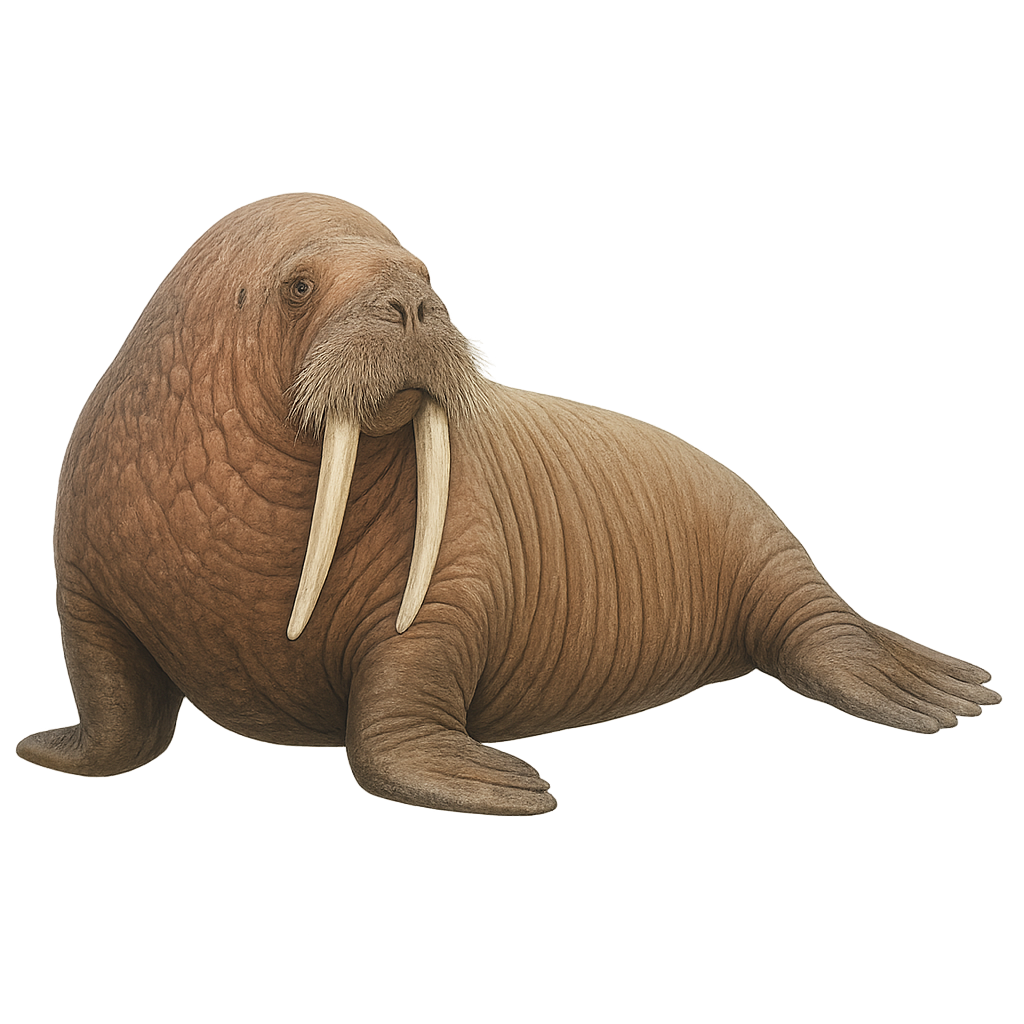Your wildlife photography guide.
Explore the pacific walrus in detail, study its behavior, prepare your shots.
Where to observe and photograph the pacific walrus in the wild
Learn where and when to spot the pacific walrus in the wild, how to identify the species based on distinctive features, and what natural environments it inhabits. The WildlifePhotographer app offers tailored photography tips that reflect the pacific walrus’s behavior, helping you capture better wildlife images. Explore the full species profile for key information including description, habitat, active periods, and approach techniques.
Pacific Walrus
Scientific name: Odobenus rosmarus divergens

IUCN Status: Vulnerable
Family: ODOBENIDAE
Group: Mammals
Sensitivity to human approach: Suspicious
Minimum approach distance: 30 m
Rut period: January to March
Gestation: 330-365 jours
Births: April to June
Habitat:
Ice floes, beaches, coastal waters
Activity period :
Activity varies depending on season, weather, or human pressure.
Identification and description:
The Pacific walrus, Odobenus rosmarus divergens, is an iconic species of the Arctic regions. With impressive tusks, it uses these long canines to haul itself onto ice and for defense. Its thick, wrinkled skin is covered with sparse hair, and it can weigh up to 1,700 kg. Males are generally larger than females. The walrus lives in large groups on ice floes and beaches, feeding mainly on mollusks found on the sea floor. Although an excellent swimmer, it spends much time resting on ice. Climate change and melting ice threaten its natural habitat, making its survival uncertain.
Recommended lens:
400 mm – adjust based on distance, desired framing (portrait or habitat), and approach conditions.
Photography tips:
To photograph the Pacific walrus, it's essential to maintain a safe distance of at least 30 m to avoid disturbing it. Use a telephoto lens of 400 mm or more to capture detailed images without getting too close. The best photos are often taken when the walrus is on ice or feeding. Take advantage of the soft morning or evening light to achieve shots with a beautiful ambiance. Be patient and wait for the walrus to strike an interesting pose or interact with other group members.
The WildlifePhotographer App is coming soon!
Be the first to explore the best nature spots, track rutting seasons, log your observations, and observe more wildlife.
Already 1 432 wildlife lovers subscribed worldwide

